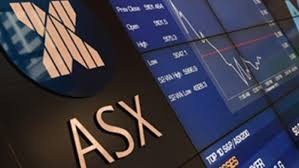Weekly market review
Written and accurate as at: Jan 24, 2018 Current Stats & Facts

The S&P/ASX 300 has had a muted start to 2018, down -0.88% YTD, in contrast to the S&P 500’s strong run out of the blocks and +5.1% gain (in USD terms). The successful passage of tax reform through Congress has helped support US equity sentiment and at least partly explains the divergence in performance across the Pacific. Early indications are that new tax rules may see US companies boost capex and investment as well as pay down debt – for example, Apple announced last week that it plans to repatriate billions of dollars back to the US and invest in new jobs. Market composition also helps explain why Australia has lagged – tech and healthcare stocks have been strong performers and together make up almost 40% of the US index, versus just over 9% of the ASX 300.
The Australian market does have a high proportion of bond-sensitives, which have had a lacklustre start to the year. US bond yields continue to creep higher as the economy remains on track for another quarter of 3%+ GDP growth, with 10 year Treasuries now yielding 2.66% versus 2.35% in mid-December. A strengthening AUD – which now sits at just under 80c US – renders rate hikes in Australia less likely, yet 10 year yields have also risen domestically and now sit at 2.84%. Bond-sensitive stocks have weakened ytd as a result. The S&P/ ASX AREIT index is down -3.4%, with residential-exposed REITs such as Mirvac (MGR) (-6.0%) and Stockland (SGP) (-5.4%) the worst performing. Infrastructure stocks have also dropped, with Transurban (TCL) down -3.5% ytd, as have utilities such as AGL Energy (AGL) (-2.9% ytd).
Other stand-out laggards include rail freight company Aurizon (AZJ) (-8.5%), which has been hit by the Queensland Competition Authority’s decision to limit the revenue it can earn from allowing access to its rail network. Tabcorp (TAH) (-7.4%) has also been among the worst performers, giving back some of the strong gains it made in late 2017 on the back of its merger with Tatts Group. There has been profit taking too in some of the energy stocks, with Santos (STO) down -5.7% and Origin Energy (ORG) -5.0% ytd despite sustained strength in the oil price. Packaging company Amcor (AMC) has fallen -6.2%, with investors possibly selling ahead of what management has flagged will be a tough first half.
Miners have continued their strong run into the new year, with the S&P/ASX 300 Metals & Mining index up +2.46%. Iron ore is currently sitting at around US$75 a tonne and with most market analysts still using a price in US$60-65 range, significant earning upgrades are starting to filter through. The market is expecting a slug of free cash flow to find its way into their pockets via share buybacks; Rio Tinto (RIO) completed its $1.5bn buyback for last year in December, while BHP (BHP) is expected to follow suit. We remain positive on resources as supply side discipline – driven primarily by Chinese policies to enable state-owned producers to make enough money to service their considerable debts – can continue to support commodity prices sufficient to generate strong free cash flow. BHP (up +3.8% ytd) moves to divest poorer-quality assets should help boost its return on equity. Elsewhere within the sector RIO is up +2.9%, Fortescue Metals (FMG) +4.9% and South32 (S32) +10.3% ytd.
In retail, JB Hi-Fi (JBH) (+11.8%) has enjoyed a strong start to the year – bouncing back from weakness in H2 2017 as the skies did not fall in the day that Amazon launched its expanded offering in Australia. Early indications that Christmas sales were strong in consumer electronics – helped by December 25th falling on a Monday – have also supported the price. There is little doubt that Amazon’s proposal and effect on the market will expand going forward, however we remain confident that JBH is among the best-placed companies in Australia to deal with increased competitive intensity. Even with its pop this year, it remains towards the lower end of its long-term price/earnings band. Flight Centre (FLT) was also among the market’s best, up 10.4% as travel demand remains strong and a higher oil price may ultimately translate into higher ticket prices. Higher oil prices have weighed on Qantas (QAN) (+3.8%) in the last half of 2017, however it has regained some of that over January.
Sirtex Medical (SRX) (+9.0%) has bounced year-to-date, following an earnings upgrade from the new CEO. While it is driven by cost control rather than a revenue uplift, this does provide some relief for investors who have endured a poor couple of years on the back of disappointing medical trials. Fund manager Janus Henderson (JHG) (+3.6%) has also done well, buoyed by decent global equity markets and the US tax cut.
It is interesting to note that the banks have returned to the bottom of their 20-year range of P/E relative to the market. Today, the major concern remains the effects of the Royal Commission, which at the very least is likely to see banks remain wary of pushing through mortgage price in the short term. At the same time, a slowing home market is likely to see lower credit growth. From here, we think the banks are unlikely to underperform significantly, however it is hard to get any confidence that they will be outperformers in the near-term.










